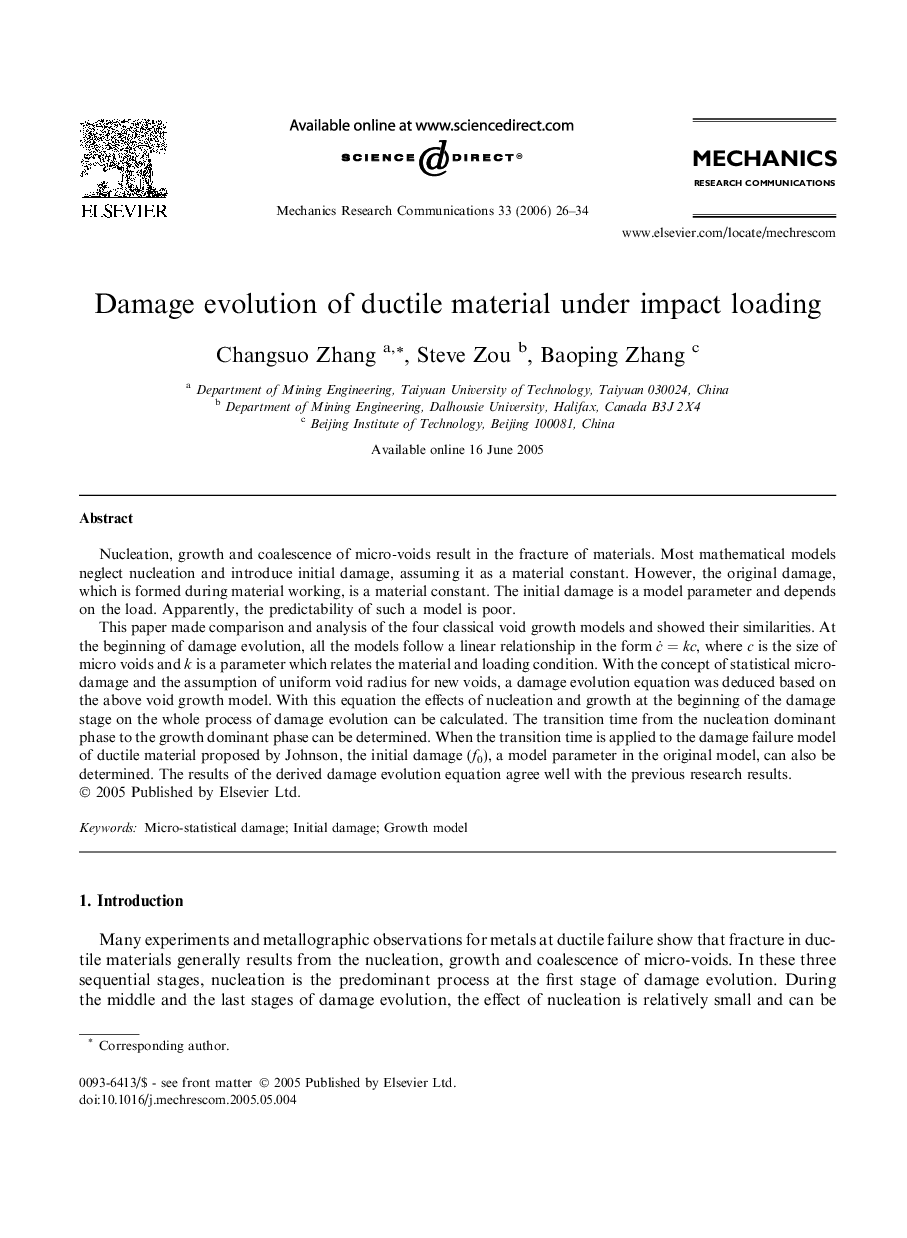| Article ID | Journal | Published Year | Pages | File Type |
|---|---|---|---|---|
| 803784 | Mechanics Research Communications | 2006 | 9 Pages |
Nucleation, growth and coalescence of micro-voids result in the fracture of materials. Most mathematical models neglect nucleation and introduce initial damage, assuming it as a material constant. However, the original damage, which is formed during material working, is a material constant. The initial damage is a model parameter and depends on the load. Apparently, the predictability of such a model is poor.This paper made comparison and analysis of the four classical void growth models and showed their similarities. At the beginning of damage evolution, all the models follow a linear relationship in the form c˙=kc, where c is the size of micro voids and k is a parameter which relates the material and loading condition. With the concept of statistical micro-damage and the assumption of uniform void radius for new voids, a damage evolution equation was deduced based on the above void growth model. With this equation the effects of nucleation and growth at the beginning of the damage stage on the whole process of damage evolution can be calculated. The transition time from the nucleation dominant phase to the growth dominant phase can be determined. When the transition time is applied to the damage failure model of ductile material proposed by Johnson, the initial damage (f0), a model parameter in the original model, can also be determined. The results of the derived damage evolution equation agree well with the previous research results.
